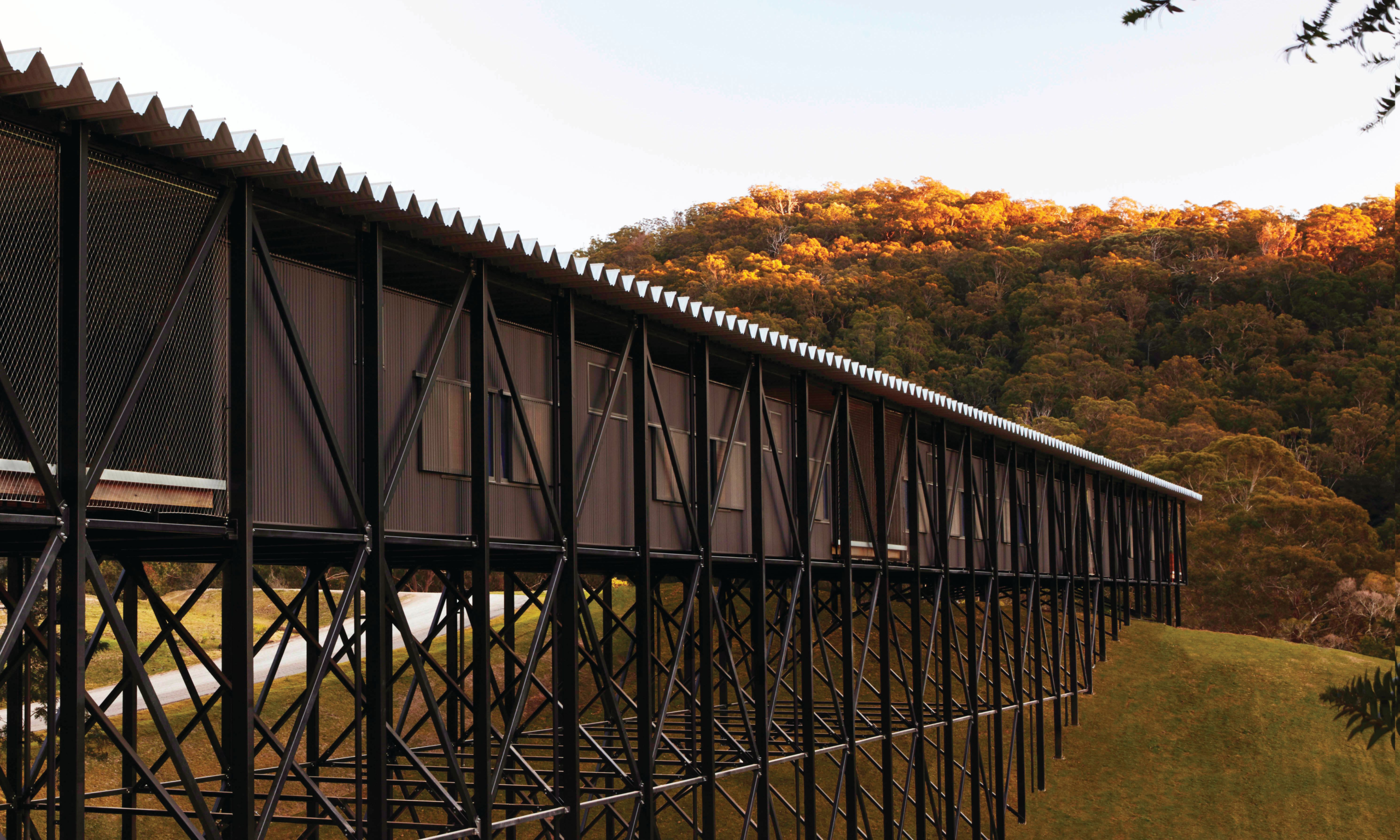A dramatic 160m-long bridge designed by the architect Kerstin Thompson will house 32 bedrooms at Bundanon, featuring windows the size of Arthur Boyd's favoured canvases Photo: Zan Wimberley
Bundanon, the sprawling rural estate gifted to Australia by the artist Arthur Boyd, will reopen in early 2022 following a A$33m ($25m) redevelopment including a bushfire-resistant subterranean gallery and a 160m-long bridge housing a learning centre and accommodation in a style inspired by the former owner’s plein-air painting practice.
Boyd, who died in 1999, produced many of his best-loved landscapes at Bundanon, almost 200km south of Sydney. The Boyds returned regularly to Bundanon from their other home in Suffolk, UK. Bundanon entranced them when they first saw it in 1971, and they bought it in 1979. Pulpit Rock, seen across the Shoalhaven River from the colonial house on the property, appears in numerous paintings by Boyd.
The artist’s plan was that Bundanon would be used to foster the future of the Australian arts and that the public should freely enjoy it. True to this vision, the property each year hosts 350 artists and other creatives as part of Australia’s largest residency programme. Until now, Bundanon has opened its doors only one day a week and for special events. With the new facilities and programmes, it will move to opening five days a week, from Wednesday to Sunday, according to its new chief executive, Rachel Kent.
Australian artist Arthur Boyd painting at Bundanon in around 1993 Photo: Bundanon Archive
“Bundanon has never really faced forwards in a full-time capacity before, so this is a really big shift. The ambition is very high,” Kent says.
The new underground gallery entailed tunnelling into a woody hillside. It will house special exhibitions as well as storing Bundanon’s A$46m ($34.5m) collection of art by Boyd, other members of his artistic family, and other Australian modern artists. Two large “chimneys” will extend up and out through the top of the hillside, acting as skylights for the gallery and giving glimpses of bushland.
The dramatic, leggy design of Bundanon’s new bridge, which spans an occasionally flood-prone gully, echoes the old trestle bridges typical of Australian floodplains, says the Melbourne-based architect, Kerstin Thompson.
As well as dining and creative learning areas, there are 32 bedrooms on the bridge. Featuring sliding screens and timber louvres, the rooms are painted in one of Boyd’s favourite shades of blue, and the windows overlooking the landscape are the same dimensions as his favoured large canvases. Guests will feel closely connected to nature, Thompson says. “The bridge has a lovely sense of shade. But it isn’t about sealing you up in a hotel room with air-conditioning.”
Bundanon's new buildings under construction in August 2021 Photo: courtesy of Bundanon
Bundanon is not a hotel, Kent says, but a welcoming place for people engaging in its cultural, environmental and First Nations programmes. “It’s an absolute priority to support and engage with First People’s community and land care. The Wodi Wodi people of the Shoalhaven area are a very active and engaged community,” she says.
The institution has just signed a “cultural burning” programme with local Indigenous people that will guide its bushland management following the 2019-20 fires that roared to within a kilometre of the site. The then chief executive Deborah Ely was forced to evacuate the property’s most valuable paintings and archives.
Bundanon’s redevelopment has been largely funded by the Australian federal government and the state of New South Wales. Kent says public investment has set Bundanon up to become more self-supporting.
She describes Bundanon as an “extraordinary” treasure. “It is landscape and environment, it is art and culture, it has the history of Arthur Boyd and the Boyd family, the Arthur Boyd homestead and studio, then you have this whole new infrastructure.”
In the words of Boyd himself: “There are marvellous bushwalks, rare wildflowers, kangaroos, lyrebirds, bowerbirds, owls, lorikeets, cockatoos, wombats.”

